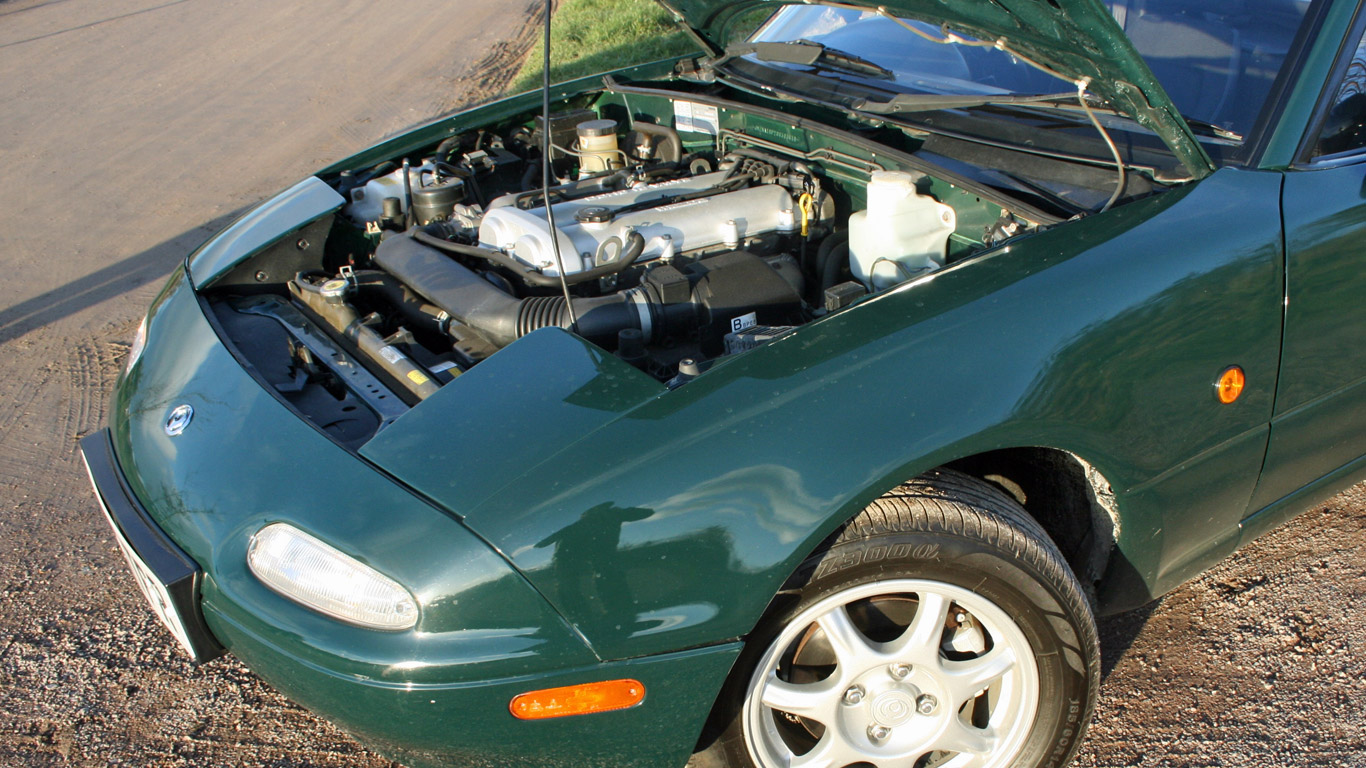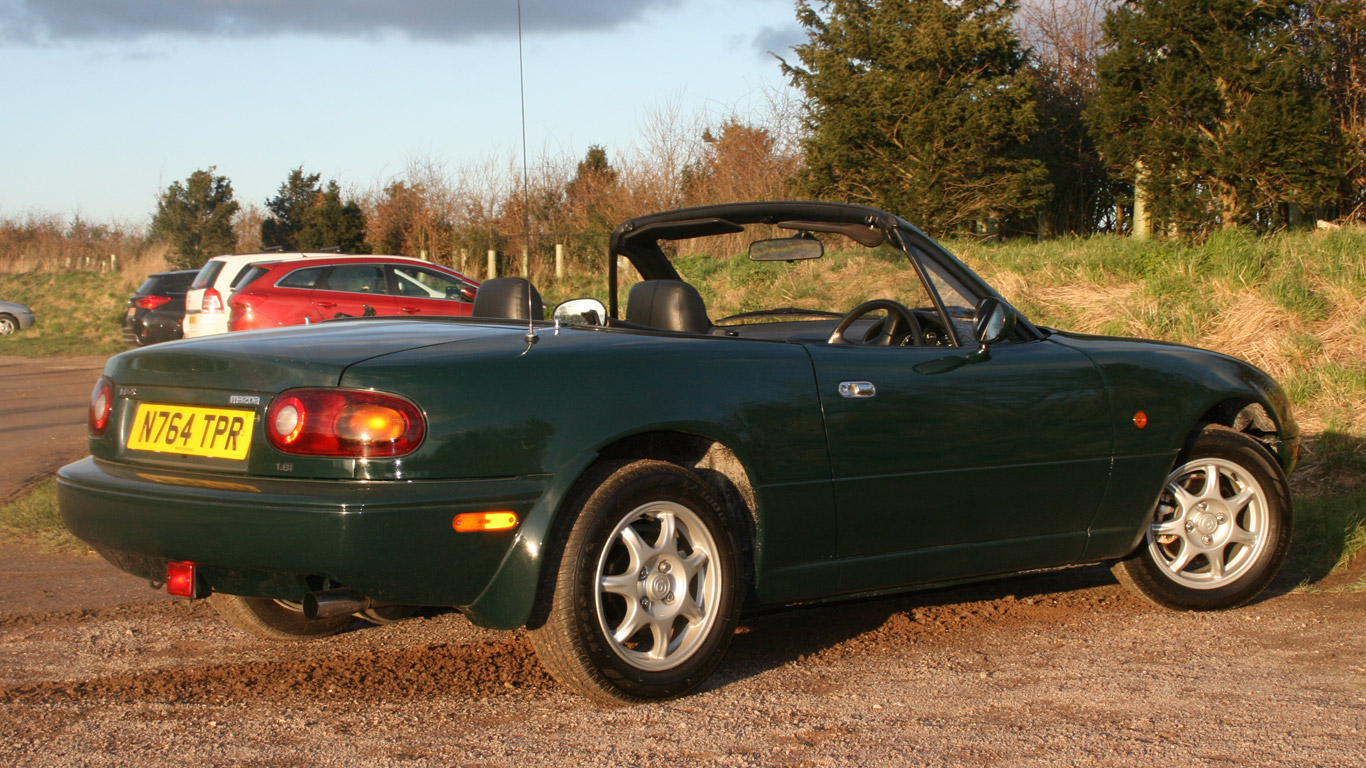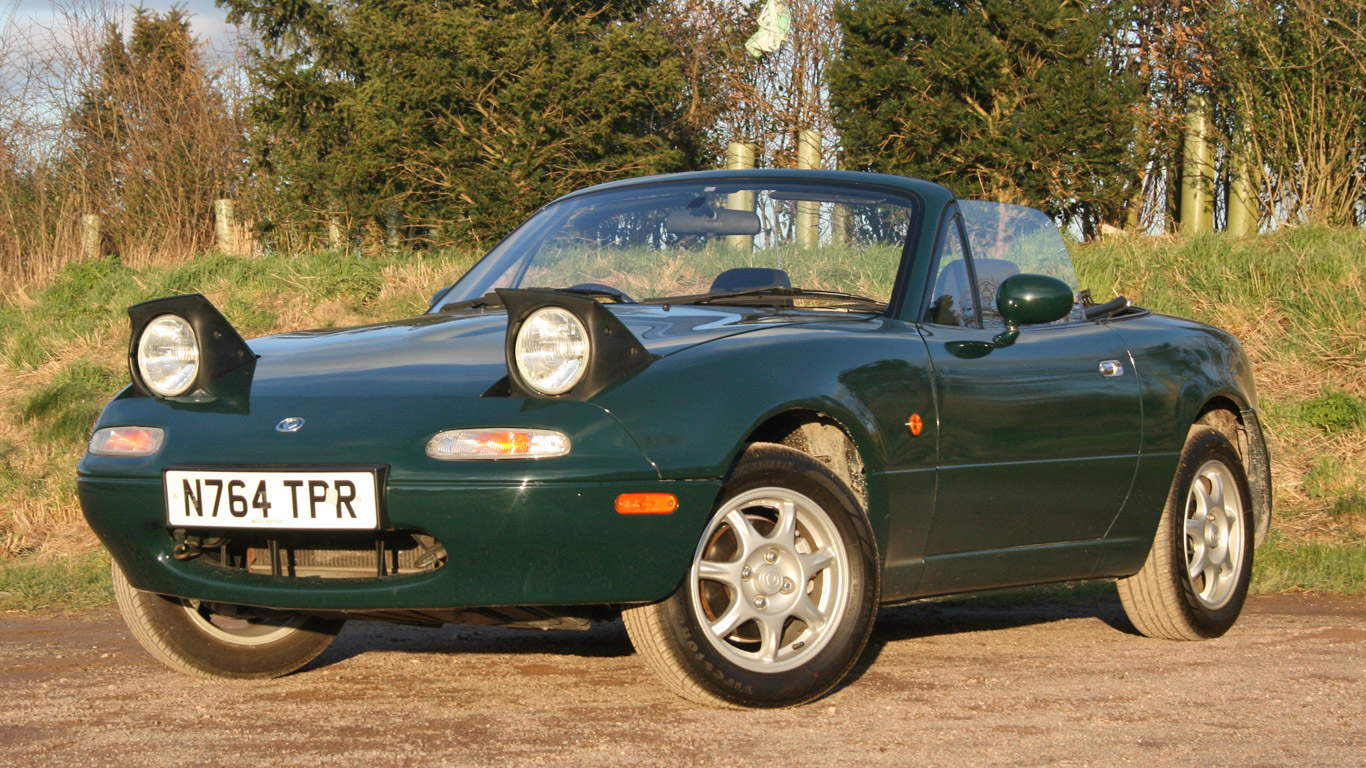This is the first generation of the world’s best-selling sports car. A car that famously offers a pure and rewarding driving experience for a very affordable price.
Indeed, 35 years after it was launched, Mazda retains this original car’s ethos in the current, fourth-generation MX-5.
What were its rivals?
That’s the thing… there aren’t really any. Sure, there was the contemporary Toyota MR2, but it’s more expensive to buy and offers snappier, mid-engined handling. It’s not a proper convertible, either.
Aside from that? Well, MG tried to battle Mazda with the MGF, but it’s a flawed Austin Rover parts-bin effort that is best avoided. A classic MGB might appeal to folk with a more committed mindset, however (i.e. those with full belt-and-braces AA membership).
Which engines does it use?

This example we’re testing here uses the more powerful 1.8-litre engine, introduced in 1993. It’s not as eager to rev as the peppy 1.6-litre, although later 1.6 models were detuned to just 90hp.
If you want anything close to sports car performance, you’ll need this 130hp 1.8 version.
What’s it like to drive?
As they age, these cars are heavily affected by factors like suspension geometry and tyre choice. This example, part of Mazda’s UK heritage fleet, is pretty sorted in that regard – as you’d expect. Its suspension is standard, meaning it sits higher than some might like, but that results in a compliant ride.
Without power steering, the MX-5 provides oodles of feedback and encourages you to make swift progress. It’s a car better suited to a twisty country lanes than more open, flowing roads, thanks to its modest power and nimble handling. Very little drives as well as an early MX-5 for the money.
Reliability and running costs

Here’s another appealing thing about the MX-5. Its engines are pretty bulletproof, as long as you service them regularly and don’t skimp on cambelt changes. Also, due to how common these cars are, parts are very cheap, and there is a good network of owners’ clubs and online forums for support.
Classic car insurers love them, too – and you’ll comfortably see in excess of 30mpg unless you drive everywhere near the redline. Which you might…
Could I drive it every day?
It’d be a bit of a shame to. The Mazda MX-5 works well as a weekend car, alongside a comfy commuter for the daily grind. Roofs that can occasionally be less than 100 percent watertight, plus a small and basic cabin, might start to wear after a while. Still, if you can put up with these foibles, you certainly could use an MX-5 every day.
A well-maintained MX-5 is unlikely to go wrong – just be sure to give it a good clean underneath with a pressure washer if you have driven on salted winter roads.
How much should I pay?
Mk1 MX-5 prices have increased markedly in recent years as the number of survivors has dwindled. As ever, pay as much as you can afford.
You can pick up a slightly neglected example for £5,000 or so, with the best cars now advertised for upwards of £10,000. Still, find a good one and it shouldn’t depreciate.
What should I look out for?

Rust. That’s the thing that kills MX-5s. Expect to replace the sills on a semi-regular basis, but rust around the wheelarches and windscreen will be costly to repair properly. Look out for bodged examples – take a magnet and make sure they’re made of metal rather than filler. If the body is tidy, anything else is comparably cheap to fix.
You should also beware that there are lots of ‘Mazda Eunos’ Japanese imports in the UK. There’s no reason why you should avoid these – they’re so common that car insurance companies generally treat them the same as UK-market MX-5s. They often have a better specification, too (including the likes of air-con). Just make sure they come with some service history.
Should I buy one?
There are reasons why the original MX-5 is so popular. It won’t draw a crowds at a classic car show, but for a sunny weekend nothing will make you smile as much for the money. Apart from the cheaper and equally sprightly Mk2 Mazda MX-5, perhaps.
Pub fact
The MX-5 holds the Guinness World Record for being the best-selling two-seat sports car in history. When the record was declared in 2000, more than 500,000 examples had been sold. In 2017, that number surpassed one million – and it continues to increase daily.
ALSO READ:
Mazda MX-5: story of the world’s favourite sports car


